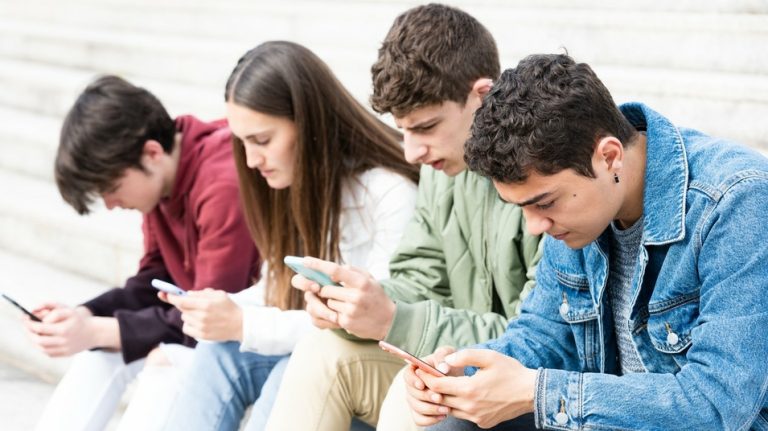The Double-Edged Sword: Social Media’s Impact on Youth
Social media has irrevocably transformed the landscape of human interaction, particularly for young people. Platforms like Instagram, TikTok, Snapchat, and Twitter have become ubiquitous in their lives, serving as both powerful tools for connection and potential sources of harm. This digital realm offers unprecedented opportunities for learning, self-expression, and social activism, yet simultaneously presents challenges to mental well-being, social development, and self-perception. Navigating this complex terrain requires a nuanced understanding of both the promises and perils of social media’s influence on youth.
One of the most significant benefits of social media lies in its democratization of knowledge and creative expression. Educational resources, online courses, and career guidance are readily available, empowering young people to acquire new skills and explore their passions. Platforms like YouTube and LinkedIn have become invaluable tools for self-improvement and career preparation. Furthermore, social media provides an unprecedented platform for creative expression, allowing young people to share their talents, stories, and perspectives with a global audience. Apps like TikTok and Instagram facilitate the creation and dissemination of user-generated content, fostering a sense of community and belonging among like-minded individuals. This digital landscape allows youth to find their voice and connect with others who share their interests, empowering them to explore their identities and build meaningful connections.
Beyond individual growth, social media has become a powerful catalyst for social change. Youth-led movements advocating for climate action, social justice, and political reform have leveraged platforms like Twitter and Instagram to organize, mobilize, and amplify their voices. These digital spaces provide a platform for young people to engage in critical discussions, raise awareness about important issues, and mobilize collective action, ultimately contributing to a more informed and engaged citizenry. This newfound power to connect and organize has empowered a generation to become active participants in shaping the world around them.
However, the pervasive influence of social media is not without its downsides. The curated and often idealized portrayals of life online can negatively impact mental health, fostering feelings of inadequacy, anxiety, and depression. The constant pressure to present a perfect image and the relentless pursuit of validation through likes and followers can contribute to low self-esteem and body image issues. Furthermore, the anonymity afforded by these platforms can embolden cyberbullying, with devastating consequences for victims. The emotional toll of online harassment can significantly impact young people’s well-being and academic performance, highlighting the need for robust online safety measures and support systems.
The nature of online interaction itself can also present challenges to healthy social development. While social media allows young people to stay connected with friends and family across geographical boundaries, it can also hinder the development of crucial face-to-face communication skills. Over-reliance on digital communication can lead to superficial connections and a diminished capacity for empathy and emotional intelligence. This "digital disconnection" can impede the development of strong interpersonal relationships and hinder young people’s ability to navigate the complexities of real-world social interactions.
Moreover, the algorithmic nature of social media platforms can create "echo chambers," reinforcing existing beliefs and limiting exposure to diverse perspectives. This phenomenon can hinder critical thinking and contribute to the spread of misinformation and polarized viewpoints. The constant exposure to tailored content can create a distorted view of reality, making it difficult for young people to discern fact from fiction and engage in constructive dialogue with those who hold differing opinions. This can have serious implications for informed decision-making and civic engagement.
To mitigate the negative impacts of social media while maximizing its benefits, a multi-pronged approach is crucial. Parents, educators, and policymakers have a vital role to play in promoting responsible social media usage. Digital literacy programs that teach critical thinking skills, media literacy, and online safety are essential to empowering young people to navigate the digital landscape responsibly. These programs should equip young people with the tools to identify misinformation, manage online relationships effectively, and understand the impact of excessive screen time on their mental and physical well-being.
Open communication between parents and children about social media usage is also paramount. Establishing clear boundaries and encouraging a healthy balance between online and offline activities can help young people develop healthy digital habits. Promoting alternative activities such as sports, hobbies, and family time can provide valuable opportunities for social interaction, physical activity, and personal growth, fostering a well-rounded and balanced lifestyle.
Social media platforms themselves also bear a responsibility to create safer and more supportive digital environments. Implementing stricter policies against cyberbullying, providing access to mental health resources, and developing tools to manage screen time are essential steps towards protecting young users. By prioritizing user well-being and fostering a culture of responsible online behavior, social media companies can contribute to a healthier and more positive digital experience for young people.
In conclusion, social media presents a complex and multifaceted challenge for today’s youth. It offers incredible opportunities for learning, connection, and self-expression, while simultaneously posing risks to mental health, social development, and self-perception. Addressing these challenges requires a collaborative effort involving parents, educators, policymakers, and the social media platforms themselves. By fostering digital literacy, promoting responsible usage, and creating supportive online environments, we can help young people harness the power of social media for good, while mitigating its potential harms. Striking this delicate balance is essential to ensuring that social media remains a positive force in the lives of young people, empowering them to thrive in an increasingly connected world.


